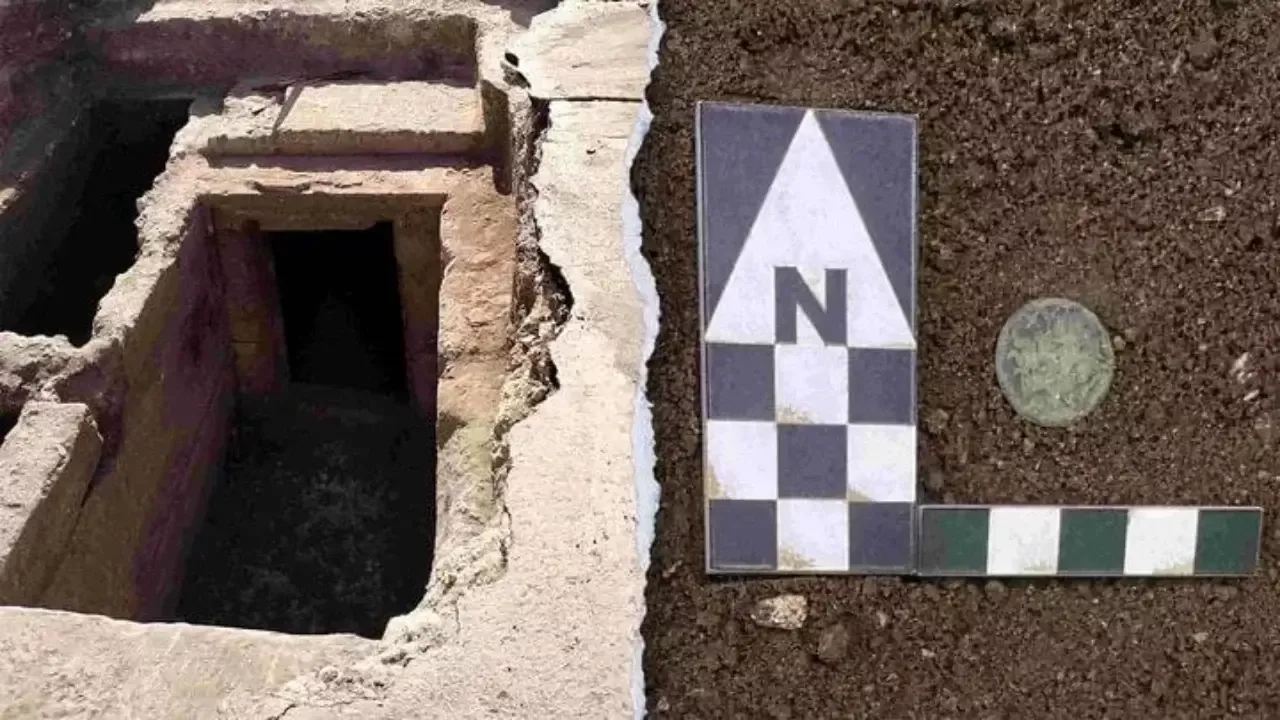
Workers constructing the sewage system in the Italian city of Manduria discovered an ancient tomb dating back to the 4th century BC. This was reported by Zamin.uz.
This tomb, placed over 2300 years ago, has been identified as belonging to the Messapian people. The Messapians lived in the area influenced by Roman and Hellenistic styles and were known for their skilled architectural constructions and distinctive burial customs.
According to archaeologists, the discovered tomb is a small burial complex consisting of two separate chambers, with red decorations on white plaster preserved along the walls. Inside, there are rich remnants of paintings and traces of a two-layered door covered with red plaster.
In the first chamber, 4th century BC ceramic vessels—vases, oil lamps, and cups—were found. On the floor, rectangular pits intended for the burial bed were identified.
Although the second chamber was sealed, it had been looted in ancient times, with only a denarius from the Roman Republic found. This indicates the continued influence of Rome in the area.
According to official sources, there are signs of damage in the tomb area, possibly caused by thieves who pierced the walls. The find holds great historical and cultural significance and allows for a deeper study of the Messapians' burial ceremonies during the Hellenistic period.
Currently, specialists are creating a complete 3D model of the tomb. This digital model will be made available online to the general public and will enable the study of the historical site using modern technologies.







